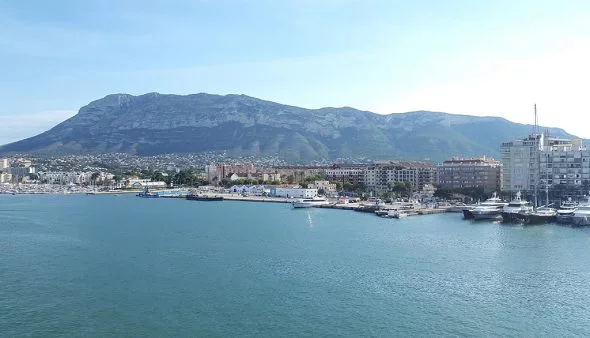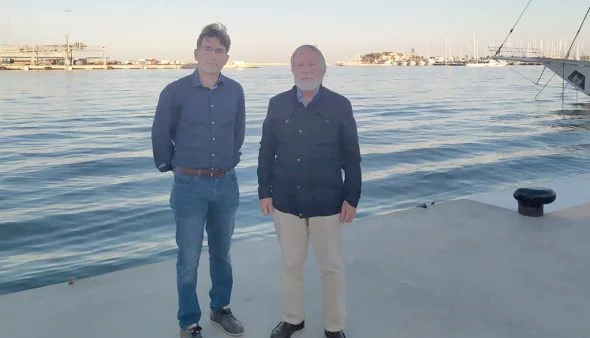The coast of Dénia has one of the largest barrier reefs of Posidonia in the Mediterranean with an extension of seven kilometers. A natural barrier that runs from the Marge Roig to Punta dels Molins. "If that barrier reef had not been there would not exist Dénia", highlights César Bordehore, professor of the Department of Ecology of the University of Alicante and researcher of the Multidisciplinary Institute for the Study of the Environment Ramón Margalef.
The Port Table of the Port of Dénia, an advisory body chaired by Gabriel Martínez, has among its functions, to inform about the problems that arise related to the port and the sea. "This summer the issue of oceanic posidonia has raised some concern, with more or less success, so it is important to be rigorous and put this issue in scientific value", says Gabriel Martínez. "Posidonia is a plant, not an algae, and is not found on all coasts", Bordehore assures, in addition, that there are sandy coasts thanks to the presence of this plant. Also, César Bordehore clarifies that if the water is not in good condition there would be no posidonia. “Posidonia exists where there is a certain quality of water and it helps to preserve or broaden the beaches of sand behind ". In this regard, the scientific advisor ensures that the erosion problems of the Dianense coast "they would be much more serious if the posidonia disappeared".
Gabriel Martínez comments on the two points that have most attracted the attention of citizens in regard to posidonia, one is the problem of anchoring and the other the bad smell of posidonia when it accumulates on the beaches.
Cesar Bordehore comments that regarding the issue of funding, a very complete scientific study has been carried out in the areas with the highest number of vessels and a quantifiable impact has not been detected due to their effect, nor has significant damage been observed, It should be taken into account that most of the boats in the area are made up of small and medium length units and that in general the anchorages are always carried out in good weather, the considerable number of buoys placed in these areas also helps.
Regarding the bad smell of posidonia "I want to make it clear that this plant does not give off a bad smell, what smells bad is an invasive algae that accompanies it that rots very quickly and that its presence indicates that something is happening under water".
In addition, Gabriel Martínez highlights the scientific station of Montgó, a tool of interest and of great value, to make environmental studies, both terrestrial and marine and atmospheric. Bordehore declares that it is an appendix of the Ramón Margalef Institute and highlights that they are currently carrying out a project on underwater geology. “The station is at the same level as other university stations like California and Sydney”, he points.
The Port Bureau, a professional association formed by all the dealers that operate in the Port of Dénia, also has among its functions the care of the environment. "There is a great concern for the environment, and of course, within our port much more", Martínez says. And it emphasizes the exemplary work of the Fishermen's Guild that bring the marine litter up to the ground in their fishing action, and then make it available to recycling companies.








